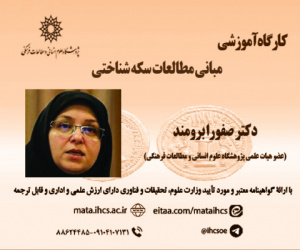طراحی و تبیین الگوی مناسب چابک سازی منابع انسانی در سازمان های دولتی جمهوری اسلامی ایران: مورد مطالعه وزارت کشور (مقاله علمی وزارت علوم)
درجه علمی: نشریه علمی (وزارت علوم)
آرشیو
چکیده
در سازمان های دولتی طی یکی دو دهه گذشته توانا سازی و چابک سازی کارکنان به یکی از مهمترین دل مشغولیهای مدیران دولتی تبدیل گردیده است. از این رو در این تحقیق، محقق به بررسی طراحی و تبیین الگوی مناسب چابک سازی منابع انسانی در سازمان های دولتی جمهوری اسلامی ایران: مورد مطالعه وزارت کشور پرداخته است. پژوهش حاضر کیفی – کمی بوده و از نظر هدف کاربردی و از نظر جمع آوری داده ها توصیفی- پیمایشی می باشد. همچنین یافته های تحقیق حاضر، در بخش کیفی با توجه به مصاحبه با 32 نفر از خبرگان و در بخش کمی با توزیع پرسشنامه در بین 141 نفر از کارکنان وزارت کشور صورت گرفته است. تجزیه و تحلیل داده ها در بخش کیفی با استفاده از تحلیل دلفی و در بخش کمی با استفاده از مدلسازی معادلات ساختاری انجام گرفت. فرآیند تجزیه و تحلیل داده ها و آزمون های آماری از طریق دو نرم افزار اس پی اس اس و پی ال اس انجام شده است. نتایج بدست آمده از بخش کیفی موجی شناسایی 7 بعد و 35 شاخص در قالب مدل الگوی چابک سازی در وزارت کشور گردید و نتایج بخش کمی نیز نشان می دهد که انعطاف پذیری سازمانی در دو بعد رفتاری و مهارتی بر چابکی سازمانی تاثیر معناداری دارد. همچنین انعطاف پذیری عملیاتی تاثیر معناداری بر چابکی سازمانی ندارد.Designing and explaining the appropriate model of human resource agility in government organizations of the Islamic Republic of Iran: A case study of the Ministry of Interior
In government organizations, empowerment and agility of employees has become one of the most important concerns of government managers over the past decade or two. Therefore, in this study, the researcher has studied the design and explanation of the appropriate model of human resource agility in government organizations of the Islamic Republic of Iran: a study of the Ministry of Interior. The present study is qualitative-quantitative and is applied in terms of purpose and descriptive-survey in terms of data collection. Also, the findings of the present study have been done in the qualitative part according to the interviews with 32 experts and in the quantitative part by distributing questionnaires among 141 employees of the Ministry of Interior. Data analysis was performed in the qualitative part using Delphi analysis and in the quantitative part using structural equation modeling. The process of data analysis and statistical tests was performed through two softwares, SPSS and PLS. The results obtained from the qualitative section identified a wave of 7 dimensions and 35 indicators in the form of agility model in the Ministry of Interior and the results of the quantitative section show that organizational flexibility in both behavioral and skill dimensions has a significant effect on organizational agility. Also, operational flexibility does not have a significant effect on organizational agility.







